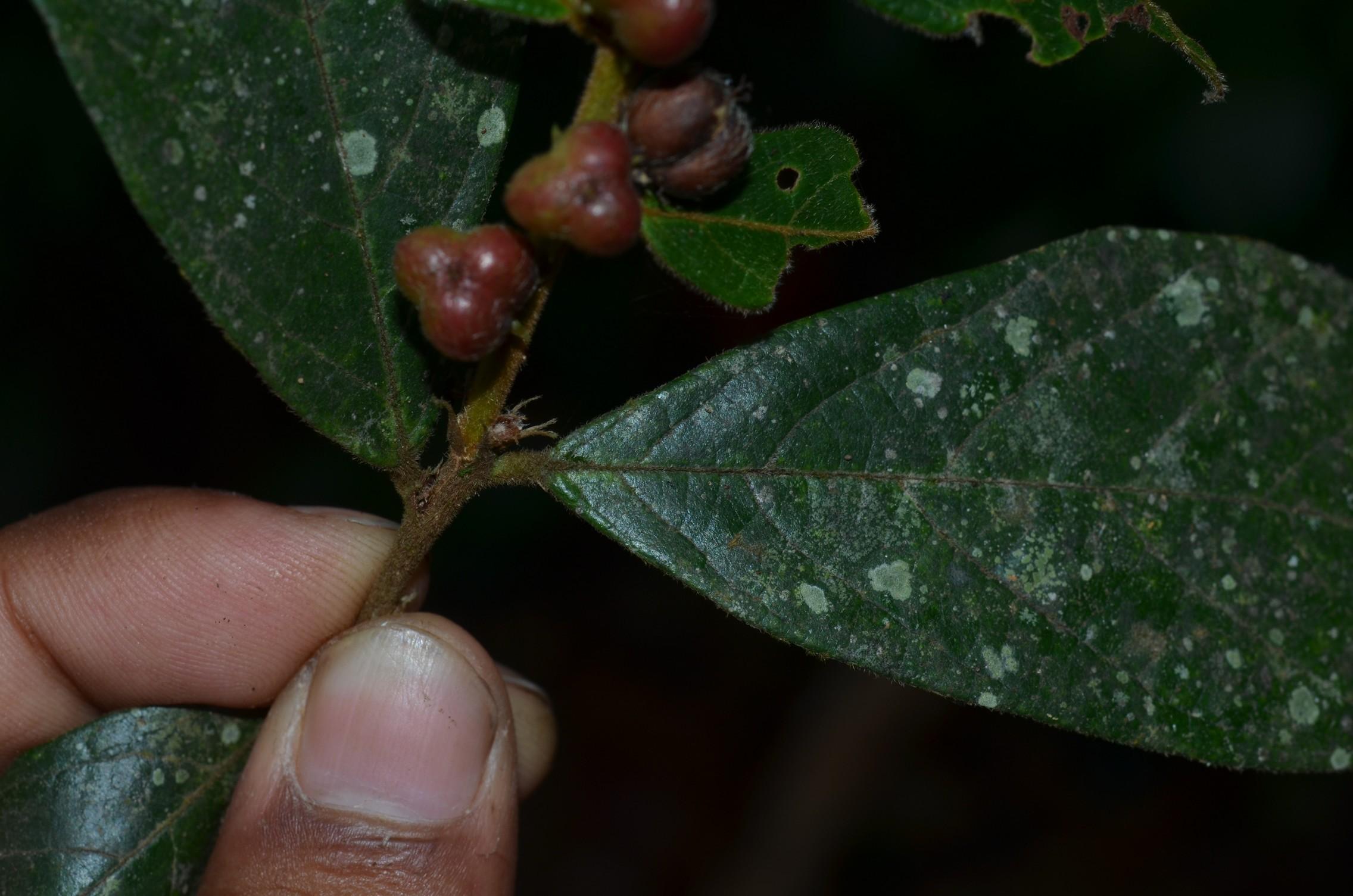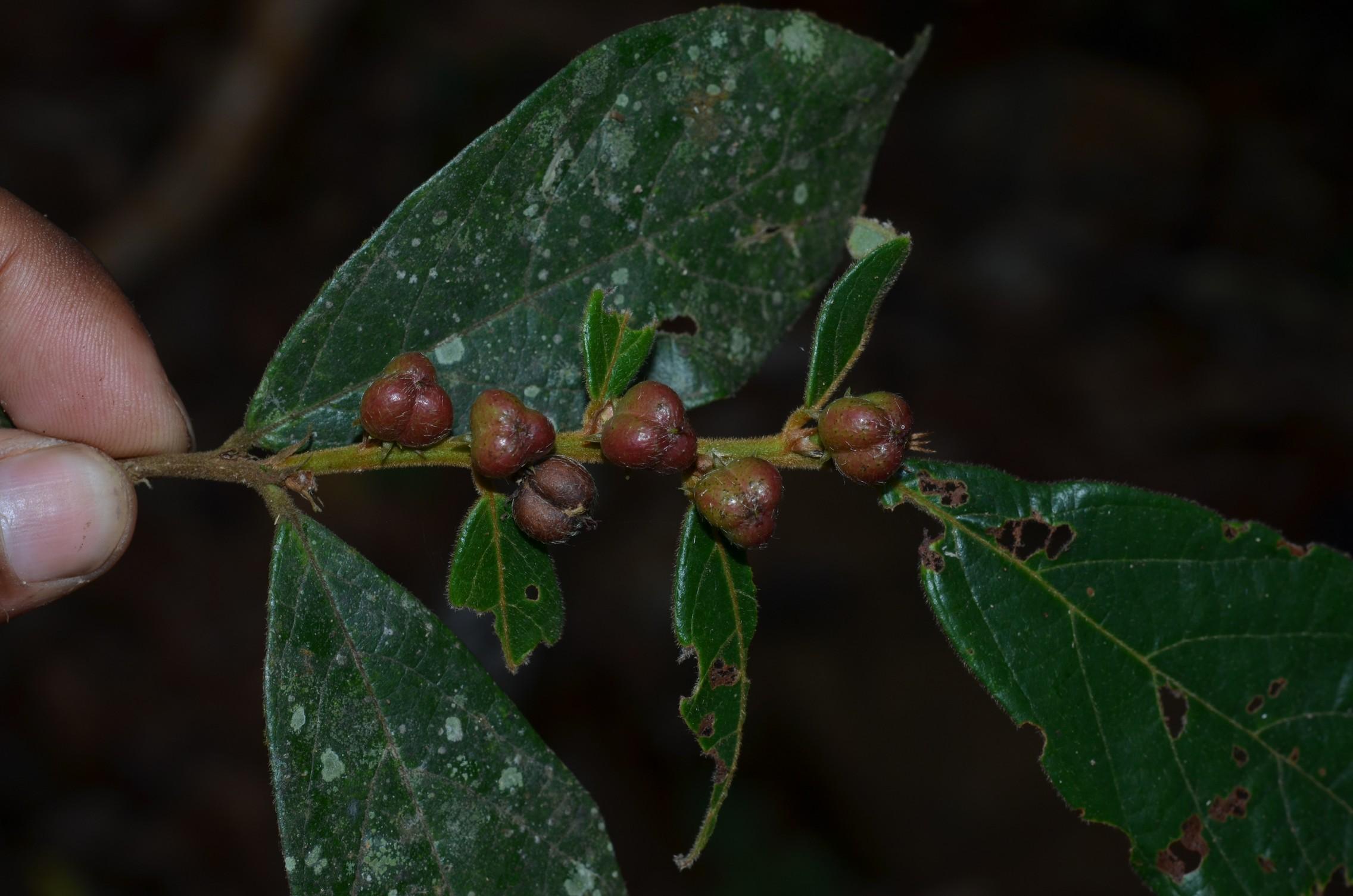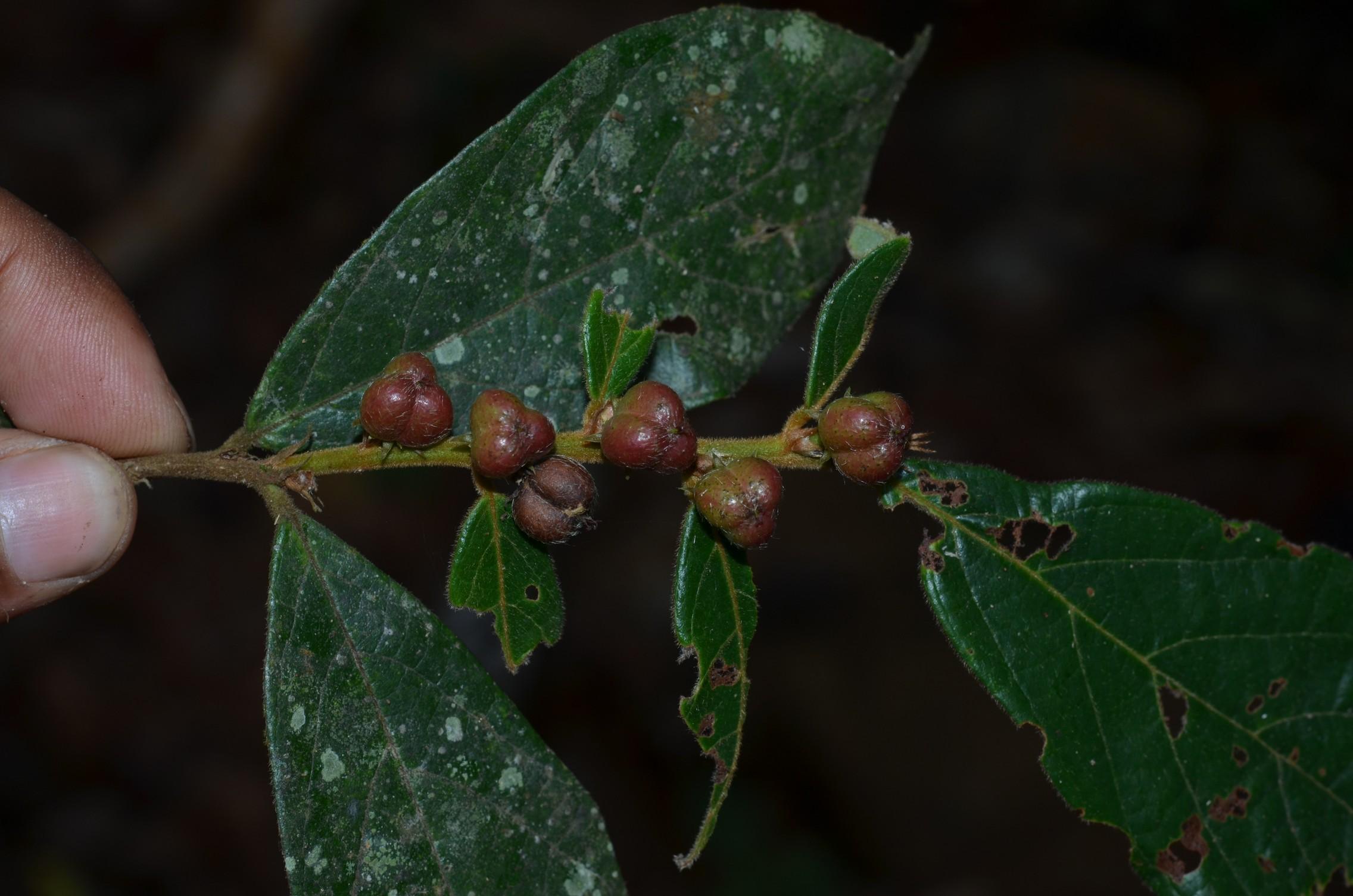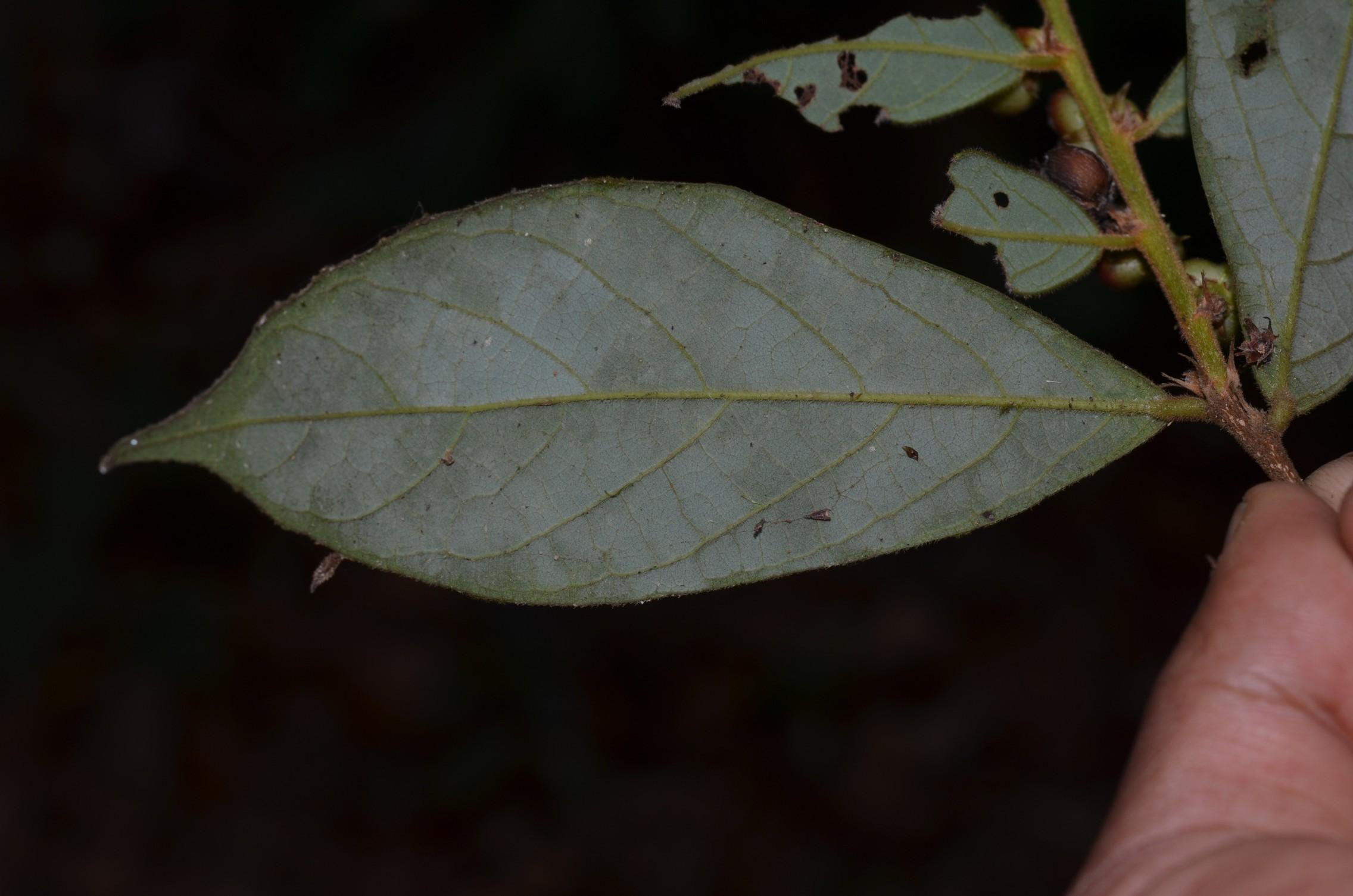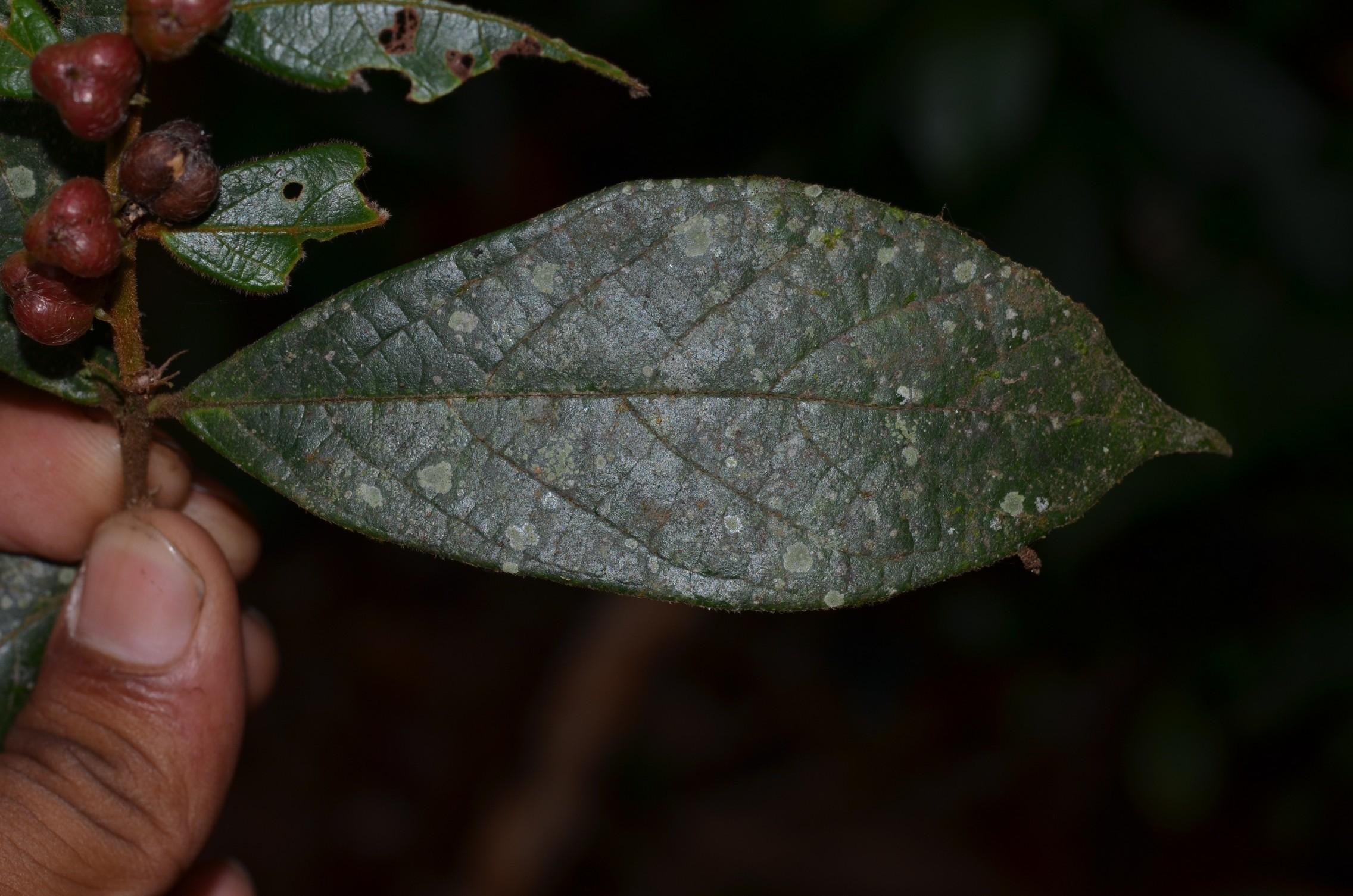|
IUCN Red List Status: Vulnerable (VU) Cleistanthus malabaricus (Müll.Arg.) Müll.Arg., Prodr. 15(2): 508 1866. (syn: Kaluhaburunghos malabaricus (Müll.Arg.) Kuntze; Lebidiera malabarica Müll.Arg.); Shrubs or small trees; branchlets brown or blackish, densely rufous or tawny-villous when young and glabrous at maturity. Leaves alternate, 4-13 x 2-4.5 cm, narrowly oblong-obovate to oblanceolate or sometimes cuneate-obovate, narrowed and acute, subacute or rounded at base, apiculate to caudate or acuminate at apex, chartaceous or thinly coriaceous, glabrous or rufous-villous or tawny-hirsute on midrib and lateral nerves above, scattered whitish or fulvous-pilose or hirsute on nerves beneath, otherwise glabrous beneath; lateral nerves 5-10 pairs, slender, faint above, raised beneath, arcuate; petioles 1.5-5 x 1-2 mm, rufous or tawny-tomentellous or villous or hirsute; stipules 5-10 mm long, subulate, linear, linear-lanceolate to filiform, villous to glabrous. Glomerules on main and lateral leafy, 4-15 cm long branches, few-flowered; bracts broadly ovate, 0.5 mm long, persistent. Male flowers: pedicels 4 x 0.8 mm, sparsely puberulous; calyx 7 mm across, glabrous; sepals narrowly subulate-acuminate or lanceolate, ca 4 x 1 mm; petals narrowly spatulate-obovate, ca 2 x 0.8 mm, slightly lobed at apex; disk shortly cupuliform; staminal column ca 1 mm long; filaments ca 0.5 mm long; anthers ellipsoid, 0.8 mm long; pistillode trifid. Female flowers: pedicels 0.5 -1 mm long, ochraceous-villous; calyx ca 4 x 5 mm, glabrous; sepals triangular or ovate-oblong, 3 x 1.5 mm; petals spathulate, 2 x 1 mm, entire, glabrous; disk copular, entire, villous along margins; ovary subglobose, 1-2 mm in diameter, densely and evanescently fulvous-villous; styles 1 mm long, free, shortly bifid, erect. Capsules somewhat depressed, 4-5 x 8-9 mm, 3-lobed, glabrous, pedicels 1-2 x ca 1.2 mm, puberulous to glabrous; seeds subglobose, 5 mm across. Flowering and fruiting: December-September
Evergreen forests
Peninsular India (endemic)
(Attributions- Dr. N Sasidharan (Dr. B P Pal Fellow), Kerala Forest Research Institute, Peechi
Vulnerable B1+2c ver 2.3 Known from a few reports and even fewer herbarium specimens, the species occurs in scattered locations in the Western Ghats.
Native: India (Karnataka, Kerala)
In low to medium altitude forest.
. ANMAY33/41 Euphorbiaceae for identification (2) : 3 posts by 2 authors. Attachments (8) Family: Euphorbiaceae Wow. This is Cleistanthus malabaricus, an endemic species – now under Phyllanthaceae. Thank you very much …
. References: |
Cleistanthus malabaricus
Updated on December 24, 2024


